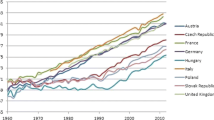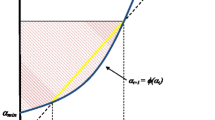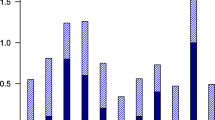Abstract
Pensions with a strong tax–benefit link (Bismarck pensions) minimise the labour–leisure distortion of the public pension system. By contrast, pensions with a strong link of benefits to the number of children (child pensions) minimise the fertility distortion. When both types of distortion are present, we obtain a Corlett–Hague result regarding the optimal mix of the two pension formulae: the Bismack pension should be given a positive weight if and only if children are more complementary to leisure than consumption. Alternative fertility instruments such as child benefits turn out to be perfect substitutes to a child pension.
Similar content being viewed by others
References
Aaron HJ (1966) The social insurance paradox. Can J Econ Polit Sci 32:371–374
Angrist JD, Evans WN (1998) Children and their parents’ labor supply: evidence from exogenous variation in family size. Am Econ Rev 88:450–477
Atkinson AB, Stiglitz JE (1976) The design of tax structure: direct versus indirect taxation. J Public Econ 6:55–75
Auerbach A (1985) The theory of excess burden and optimal taxation. In: Auerbach A, Feldstein M (eds) Handbook of public economics, vol 1. North-Holland. Amsterdam, pp 61–127
Baland JM, Robinson JA (2002) Rotten parents. J Public Econ 84:341–356
Balestrino A, Cigno A, Pettini A (2002) Endogenous fertility and the design of family taxation. Int Tax Public Financ 9:175–193
Becker GS (1991) A treatise on the family, 2nd edn. Harvard University Press, Cambridge, MA
Brunner JK (1996) Transition from a pay-as-you-go to a fully funded pension system: the case of differing individuals and intragenerational fairness. J Public Econ 60:131–146
Calhoun CA (1994) The impact of children on the labour supply of married women: comparative estimates from European and US data. Eur J Popul 10:293–318
Calhoun CA, Espenshade TJ (1988) Childbearing and wives’ forgone earnings. Popul Stud 42:5–37
Cigno A (1991) Economics of the family. Oxford University Press, Oxford
Cigno A, Rosati FC (1996) Jointly determined saving and fertility behaviour: theory and estimates for Germany, Italy, UK and USA. Eur Econ Rev 40:1561–1589
Cigno A, Casolaro L, Rosati FC (2003) The impact of social security on saving and fertility in Germany. Finanzarchiv 59:189–211
Cremer H, Gahvari F, Pestieau P (2006) Pensions with endogenous and stochastic fertility. J Public Econ 90:2303–2321
Corlett W, Hague D (1953) Complementarity and the excess burden of taxation. Rev Econ Stud 21:21–30
Dawkins R (1976) The selfish gene. Oxford University Press, Oxford
Edwards J, Keen M, Tuomala M (1994) Income tax, commodity taxes and public good provision: a brief guide. Finanzarchiv 51:472–497
Fenge R (1995) Pareto-efficiency of the pay-as-you-go pension system with intragenerational fairness. Finanzarchiv 52:357–364
Fenge R, Meier V (2005) Pensions and fertility incentives. Can J Econ 38:28–48
Fenge R, Meier V (2008) Are family allowances and fertility-related pensions perfect substitutes? Int Tax Public Financ (in press)
Kaplov L (2007) Taxation. In: Polinsky AM, Shavell S (eds) Handbook of law and economics, vol 1. North-Holland, Amsterdam, pp 651–755
Kolmar M (1997) Intergenerational redistribution in a small open economy with endogenous fertility. J Popul Econ 10:335–356
Myles GD (1995) Public economics. Cambridge University Press, Cambridge
Nava M, Schroyen F, Marchand M (1996) Optimal fiscal and public expenditure policy in a two-class economy. J Public Econ 61:119–137
Sandmo A (1976) Optimal taxation—an introduction to the literature. J Public Econ 6:37–54
Sinn HW (2000) Why a funded system is useful and why it is not useful. Int Tax Public Financ 7:389–410
Sinn HW (2001) The value of children and immigrants in a pay-as-you-go pension system: a proposal for a transition to a funded system. Ifo-Studien 47(1):77–94
Uunk W, Kalmijn M, Muffels R (2005) The impact of young children on women’s labour supply. Acta Sociol 48:41–62
von Auer L, Büttner B (2004) Endogenous fertility, externalities, and efficiency in old age pension systems. JITE J Inst Theor Econ 160(2):294–310
Author information
Authors and Affiliations
Corresponding author
Additional information
Responsible editor: Alessandro Cigno
Rights and permissions
About this article
Cite this article
Fenge, R., von Weizsäcker, J. Mixing Bismarck and child pension systems: an optimum taxation approach. J Popul Econ 23, 805–823 (2010). https://doi.org/10.1007/s00148-008-0236-1
Received:
Accepted:
Published:
Issue Date:
DOI: https://doi.org/10.1007/s00148-008-0236-1




